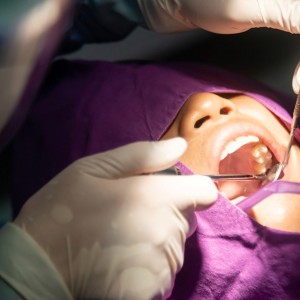
Third molar surgery: piezoelectric or standard surgical handpiece?
Lara Figini
Impacted third molars are directly or indirectly the underlying cause of numerous disorders in the mouth, jaw and facial regions like: pericoronitis and regional pain, abscess, trismus, distal caries and periodontal pocket of the second molar, development of follicular cysts etc. As a result their removal is often necessary, however, frequently leads post-operative complications for the patient such as pain, swelling and trismus, and in the worst cases, temporary or permanent lesion of the inferior alveolar nerve. Several therapeutic protocols have thus been evaluated to support improvements in the post-operative period.
Piezoelectric surgery for example allows micrometric and selective flaps while ensuring maximum surgical precision, causing minimal damage to soft tissues.
MATERIALS AND METHODS
In a clinical study published on Oral Surgery February 2019, the authors compared surgery of impacted third molars performed under general anesthesia using a piezoelectric handpiece compared to standard surgical handpiece. Thirty patients who underwent routine third molar extraction were included in the study. Panoramic radiographs were taken to evaluate the position of third molars. The patients were randomly subdivided and the split mouth technique was used in which each side (left or right) of the mouth was randomly assigned to two treatment groups. Hence each patient served as their own control. In one group, a piezoelectric handpiece was used, while a conventional handpiece was used for the second group. All aspects of preoperative care, general anaesthesia, surgery and postoperative care were standardised for the two groups. The following parameters were recorded; time of surgery, bleeding during surgery, post-operative swelling, post-operative pain, associated complications and post-operative nerve injury.
RESULTS
No statistically significant difference was found between the two groups in terms of pain and swelling.
Less bleeding was found with the use of the piezoelectric device compared to standard handpiece surgery; however, the surgical time was longer in group A. No reports of trauma to the lips or intra-oral soft tissues. Two cases of postoperative paraesthesia (6.7%) occurred in standard surgery.
CONCLUSIONS
From the data of this study, which must however be confirmed by other similar studies, it can be concluded that the use of a piezoelectric device is a valid alternative to standard surgery in third molar surgery. The use of a piezoelectric device is advocated in difficult cases especially where there is inferior alveolar nerve approximation.
CLINICAL IMPLICATIONS
Piezoelectric handpiece is best reserved for difficult and deeply impacted third molars with nerve approximation otherwise standard surgical handpiece remains the gold standard.
For additional informations:
Comparison of a piezoelectric and a standard surgical handpiece in third molar surgery
 Related articles
Related articles
Oral surgery 27 October 2025
The authors assessed the incidence of postoperative bleeding in patients who were highly anticoagulated and in patients who underwent extensive oral surgical procedures and who continued using oral...
Implantology 02 October 2025
Proper implant treatment planning remains the first priority for implant success. Dental imaging is an important tool to accomplish this task.
Oral surgery 05 September 2025
Fentanyl, a short-acting synthetic opioid, has a pharmacokinetic profile suited to fast relief of brief episodic pain.
Oral surgery 22 August 2025
Thiel embalming technique: a valuable method for teaching oral surgery and implantology
Because of its high requirements on surgical experience and the need of complete understanding of the anatomy, oral surgery and especially implantology belong to the most demanding procedures in...
Proper use of oral electrosurgery permits rapid, full management of soft-tissue problems related to mouth preparation for fixed and removable prosthodontics.
 Read more
Read more
Much like EMTs rushing to the scene after an accident, stem cells hurry to the site of a skull fracture to start mending the damage. A new finding has uncovered the signaling mechanism that triggers...
Products 05 November 2025
SimplyTest has launched a groundbreaking saliva-based test to detect high-risk strains of oral human papillomavirus (HPV), a major cause of oropharyngeal cancers.
News 05 November 2025
Perimetrics, Inc., a dental technology company pioneering quantitative diagnostics, announced today that the U.S. Food and Drug Administration (FDA) has granted clearance for the InnerView...
News 05 November 2025
On October 15, open enrollment for Medicare began nationwide. Hundreds of thousands of seniors in New Jersey will once again face the challenge of finding the right Medicare coverage, including the...
Digital Dentistry 04 November 2025
Digitalisation is an expanding field in dentistry and implementation of digital teaching methods in dental education is an essential part of modern education.















